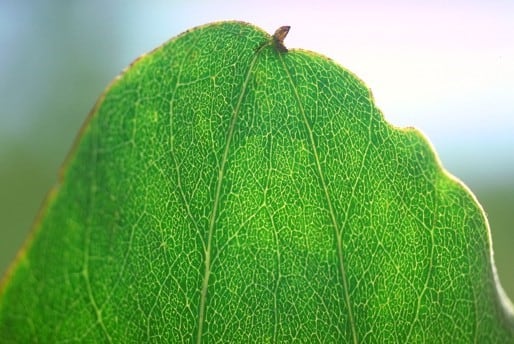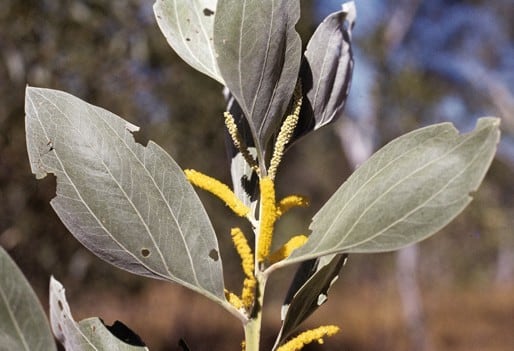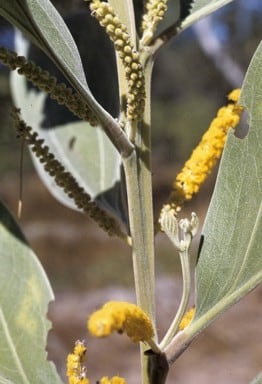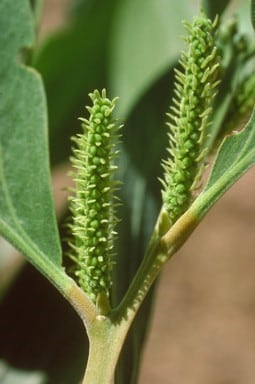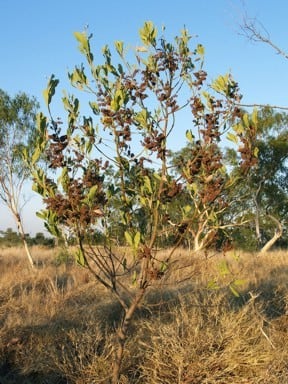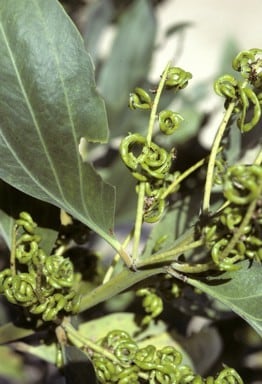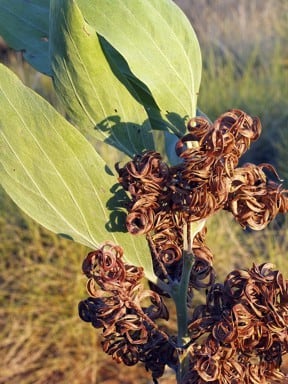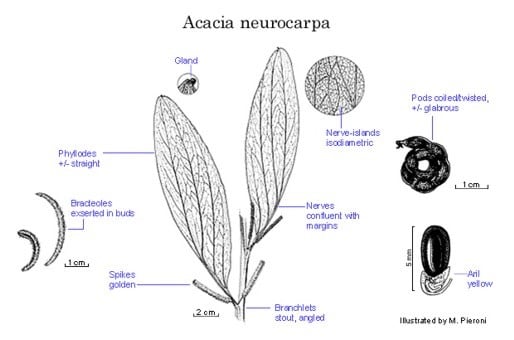Acacia neurocarpa A.Cunn. ex Hook.
WATTLE
Acacias of Australia
Family
Fabaceae
Distribution
Common from the Dampier Penin., N of Broome, W.A., eastwards through the N.T. to about longitude 143° 30’S (in the general vicinity of Georgetown), Qld.
Description
Shrub or tree 3–8 m high. Branchlets stout and prominently angled for a considerable distance below apex, velutinous to ±sericeous. Young shoots silvery sericeous. Phyllodes ascending to erect, obliquely narrowly elliptic, (9–) 12–25 (–28) cm long,(2.5–) 3–5.5 (–9) cm wide, with unequal base, dull green to greyish green, sericeous or velutinous; mucro 0.5–1.5 mm long; normally 3 prominent nerves per face contiguous and ±confluent with adaxial margin at base, prominently and closely reticulate; glands basal and at base of mucro on at least some phyllodes. Inflorescences simple or rudimentary racemes 0.5–1.5 mm long; peduncles 4–10 mm long, puberulous; spikes 4–7 cm long, golden; bracteoles ±linear, 2–4 mm long, evident and often spreading in buds. Flowers mostly 5-merous; sepals 2/3–3/4-united; petals puberulous. Pods rather tightly and often irregularly coiled, 3–4 mm wide, thinly coriaceous-crustaceous, subglabrous, persisting as entangled clumps following dehiscence. Seeds longitudinal, oblong, 3–5 mm long, glossy, dark brown to black; aril bright yellow.
Habitat
Grows in sand along seasonally wet watercourses, in woodland or riparian forest, often in association with Melaleuca sp.
Specimens
W.A.: Talbot Ck, 3 km SE of Mt Hart HS, D.J.Edinger 400 (K, NSW, PERTH); L. Argyle tourist village, Kununurra, K.F.Kenneally 19166 (CANB, K, L, PERTH); c. 7 km SW of Chattur Bay, Dampier Penin., B.R.Maslin 4935 (BRI, PERTH). N.T.: 30 km ESE of Hatches Ck Store, N.Forde 813 (DNA); Springvale, A.Nichols 629 (BRI). Qld: 93.4 km along Kidson-Gilberton road from Gregory Development Road, K.R.McDonald KRM6838 (BRI).
Notes
As discussed by B.R.Maslin & L.A.J.Thomson, Austral. Syst. Bot. 5: 729–743 (1992), it is almost certain that Allan Cunningham applied the name A. neurocarpa to the species known today as A. dunnii. However, when formally describing A. neurocarpa W.J.Hooker confounded two species under this name. In the interest of nomenclatural stability B.R.Maslin & L.A.J.Thomson, Austral. Syst. Bot. 5: 736 (1992), lectotypified A. neurocarpa to exclude A. dunnii, even though the epithet is inappropriate for the species now bearing this name.
The hexaploid species A. colei appears to have evolved as an allopolyploid between A. neurocarpa (diploid) and A. cowleana (tetraploid), fide G.F.Moran et al. (1992), in A.House & C.Harwood (eds), Australian Dry-Zone Acacias for Human Food (CSIRO, Canberra).
Until recently A. neurocarpa was confused with A. holosericea, fide B.R.Maslin & L.A.J.Thomson, Austral. Syst. Bot. 5: 729–743 (1992). Putative hybrids occur between these species in the Bungle Bungle Natl Park, W.A. (e.g. K.A.Menkhorst 524, DNA, PERTH) and in the Nicholson R. area, N.T. (e.g. T.Henshall 353, DNA). Although more work is needed in order to clarify the differences between the two species, A. holosericea is generally recognised by its shorter, spathulate bracteoles, normally narrower phyllodes with a more open reticulum comprising nerve-islands that tend to be more elongated and aligned subparallel to the main nerves, and more slender branchlets (3–6 mm wide and terete or slightly angled at 20–30 cm below the apex, compared with 5–12 mm wide and acutely angled in A. neurocarpa).
FOA Reference
Data derived from Flora of Australia Volumes 11A (2001), 11B (2001) and 12 (1998), products of ABRS, ©Commonwealth of Australia
Author
Minor edits by B.R.Maslin, J.Reid & J.Rogers
B.R.Maslin
This identification key and fact sheets are available as a mobile application:
URL: https://apps.lucidcentral.org/wattle/
© Copyright 2018. All rights reserved.

